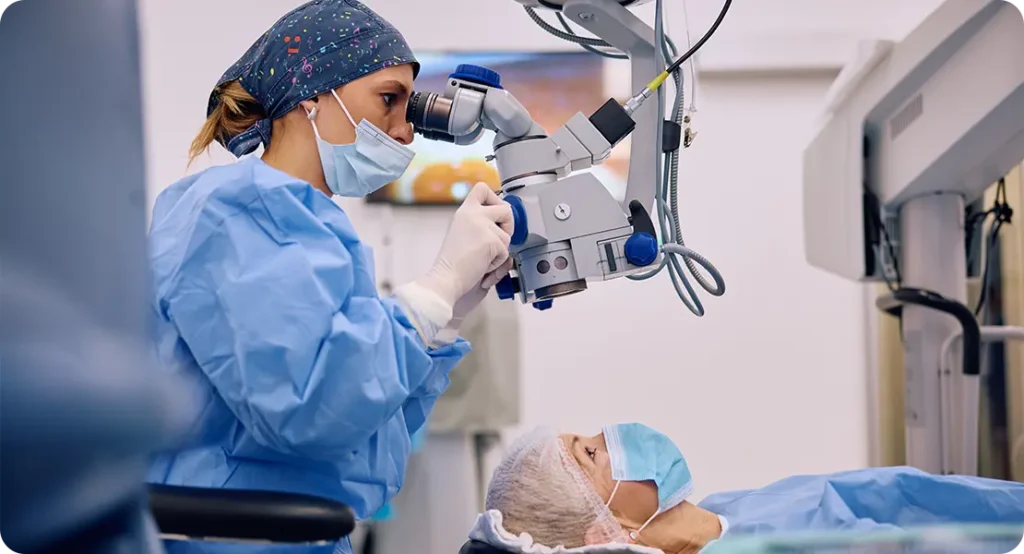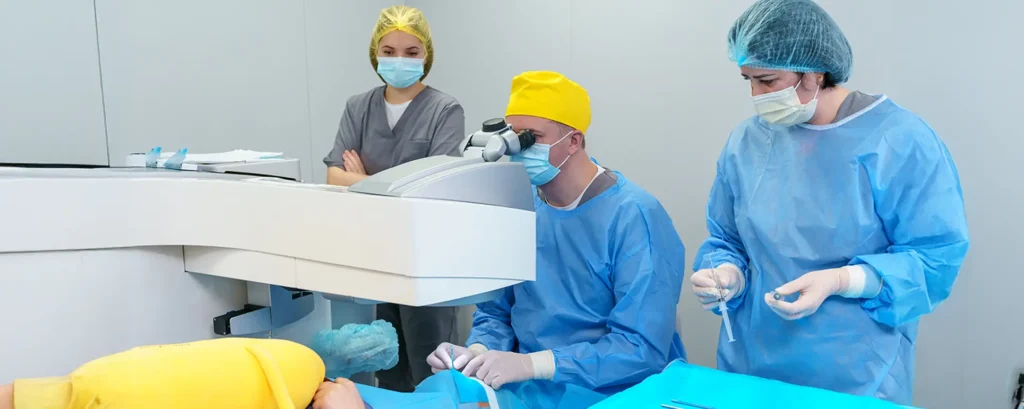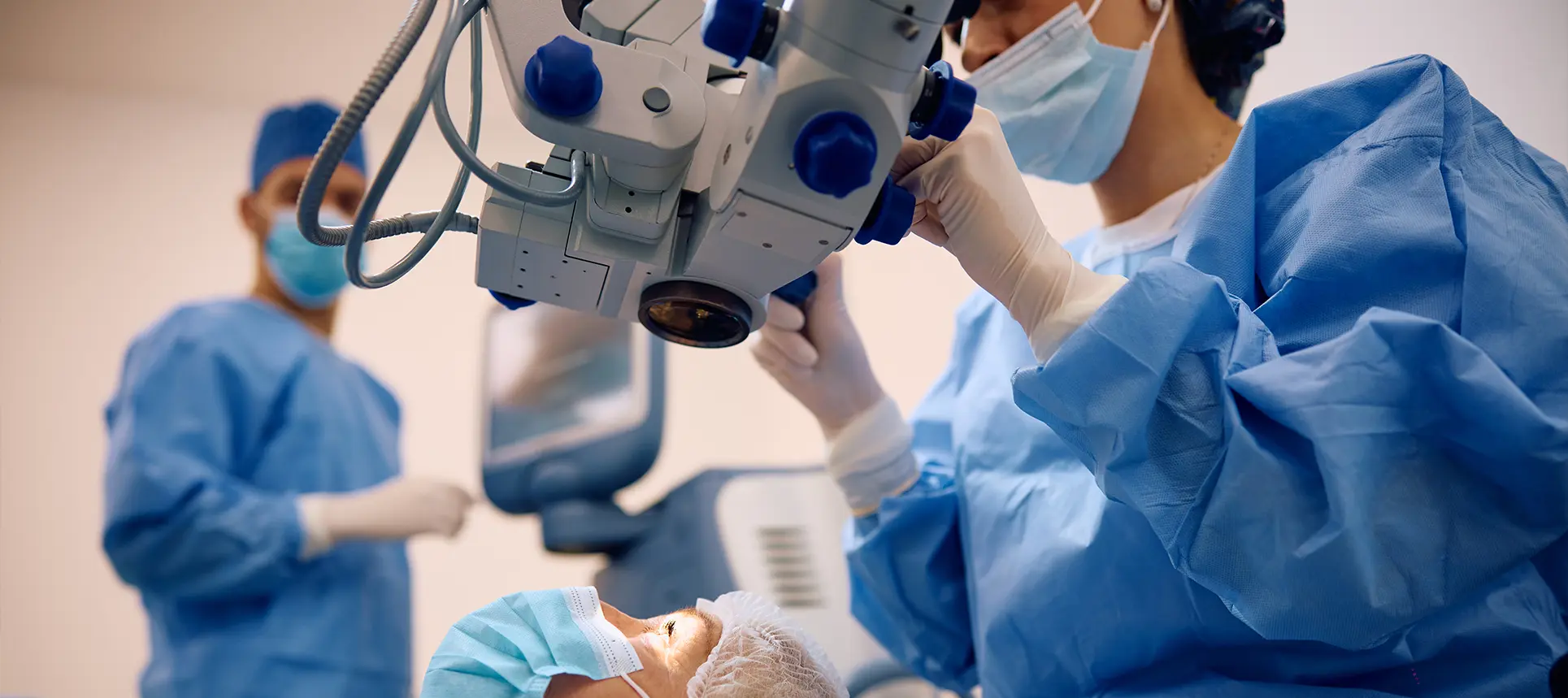When you’re told you need cataract surgery, it’s normal to focus on the immediate things—your recovery time, how quickly you’ll see better, and how comfortable the procedure will be. But one question that doesn’t get discussed as often is this: does the length of the surgery affect how well your eyes do in the long term?
That’s exactly what we’re diving into here. Let’s explore how surgical duration—especially the time spent during the phacoemulsification part of the operation—might influence outcomes like long-term inflammation, corneal endothelial cell health, and capsular behaviour. And don’t worry—we’re breaking it all down in plain English.
What Is “Surgical Duration” in Cataract Surgery?
Before we go any further, let’s clear something up. When we talk about “surgical duration” in cataract surgery, we’re not always referring to the entire time you’re in the operating theatre. Rather, we’re mostly focused on phacoemulsification time—that’s the portion where ultrasound energy is used to break up and remove the cloudy lens.
Surgeons often track this with two main indicators:
- Cumulative Dissipated Energy (CDE): This tells us how much energy is used during phaco.
- Effective Phaco Time (EPT): This reflects how long the phaco tip was active.
Both are influenced by how dense your cataract is, the technology used, and the surgeon’s technique.
Now here’s the big question—does a longer or more energy-intensive procedure lead to more problems later?
The Link Between Surgical Duration and Corneal Endothelial Cell Loss
One of the most delicate structures affected during cataract surgery is the corneal endothelium—a single layer of cells that keeps your cornea clear. Once these cells are damaged or lost, they don’t regenerate. So anything that puts stress on them during surgery can have lasting consequences.
Longer Surgeries = Greater Endothelial Stress?
Studies suggest that prolonged phacoemulsification, especially with high ultrasound energy, is associated with greater endothelial cell loss. The longer the phaco tip is active, the more heat and turbulence it creates inside the eye, which can directly or indirectly harm the endothelium.
Patients with already low endothelial cell counts—like those with Fuchs’ endothelial dystrophy—are especially vulnerable. In those cases, surgical duration becomes a major factor in planning and predicting outcomes.
Can Newer Technology Offset the Risk?
Thankfully, yes. Advances like torsional phacoemulsification, pulse modulation, and fluidics optimisation have reduced energy dispersion and improved efficiency. These tools allow surgeons to complete even dense cataracts more quickly and gently. So, while longer phaco times still pose a risk, they’re not as dangerous as they once were—provided the right equipment is used.
Inflammation and Surgical Duration: A Subtle but Important Connection

You might think that as long as the cataract comes out and a lens goes in, that’s all there is to it. But the eye is an incredibly sensitive organ, and even small traumas during surgery can spark prolonged inflammation.
Inflammatory Markers Post-Surgery
Clinical data shows that longer surgical times can lead to prolonged presence of inflammatory markers such as prostaglandins and interleukins in the aqueous humour. These markers contribute to:
- Anterior chamber flare
- Posterior synechiae (where parts of the iris stick to the lens capsule)
- Cystoid macular oedema (CMO)
Inflammation can be self-limiting, or in some cases, linger and subtly affect visual quality for weeks or even months.
Pre-existing Conditions Make It Worse
If you’ve got a condition like uveitis or diabetes, your eyes are already primed for inflammation. For these patients, shorter and smoother surgeries are ideal—not just for comfort, but to minimise long-term inflammatory sequelae. In these cases, surgeons might even pre-treat with anti-inflammatories before the operation.
Posterior Capsule Behaviour and the Role of Surgical Duration
Another subtle consequence of extended surgical time lies in how the capsular bag behaves after surgery. This membrane holds the artificial intraocular lens (IOL) in place, and any trauma to it can affect lens position and visual outcomes.
Stress and Microtrauma to the Capsule
The longer phacoemulsification continues, especially in dense nuclei, the greater the likelihood of microtrauma to the posterior capsule. This can manifest later as:
- Capsular phimosis (shrink-wrapping of the capsule)
- IOL decentration or tilt
- Increased risk of posterior capsule opacification (PCO)
While these issues might take months or years to show up, the seeds are often sown during the initial surgery.
Surgical Skill and Lens Stability
It’s not just time, but how that time is used. A careful surgeon can spend a few extra minutes but still maintain excellent capsular integrity. In contrast, a rushed or forceful approach—even if short—might lead to worse outcomes. So we mustn’t confuse “short” with “better”; it’s about efficient gentleness.
What the Research Shows So Far
Several studies have tried to quantify the exact impact of surgical duration on cataract outcomes. While not all agree on every detail, a few consistent trends have emerged:
Endothelial Cell Density Decreases With Time
A number of prospective studies confirm a direct correlation between higher CDE and postoperative endothelial loss, particularly when phaco time exceeds 40–60 seconds for moderate cataracts. However, the rate of loss can be mitigated with improved techniques and protective viscoelastic substances.
Inflammation Lasts Longer in Prolonged Cases
Multiple randomised trials have demonstrated a higher rate of CMO and prolonged anterior chamber inflammation when surgery lasts longer or involves increased ultrasound energy. These complications are more common in hard cataracts, but again, better fluidics and visco-protection reduce the risk.
PCO and Capsular Contraction: Delayed Effects
Capsular changes such as fibrosis and lens movement may take time to appear, but retrospective studies show they’re more likely when intraoperative capsule stress was high—which correlates with longer phaco times and complex cases.
So What’s an Ideal Surgical Time?
There’s no magic number. What matters most is:
- How efficiently the cataract is removed
- How well protected the cornea and capsule are
- How smoothly the procedure flows without complication
For most straightforward cases, experienced surgeons aim to keep effective phaco time below 30–40 seconds. But in more complex cataracts—like brunescent or mature lenses—longer durations may be unavoidable.
It’s all about balance. A longer but controlled surgery is often better than a short but chaotic one.
Implications for Your Cataract Surgery Decision

Now that you know how surgical duration might influence long-term outcomes, how should you use this information?
Ask the Right Questions
When you’re consulting your surgeon, consider asking:
- What’s your average phaco time for a case like mine?
- Do you use any techniques or tools to minimise endothelial damage?
- What do you do differently in more complex or mature cataracts?
Surgeons who can explain their process clearly are usually the ones who’ve thought deeply about optimising outcomes.
Prioritise Surgeon Skill and Technology
It’s not just about the clinic’s reputation—it’s about their tools and the experience of the person doing your surgery. Modern machines like Centurion or Stellaris, combined with protective strategies like dispersive viscoelastics, can make a big difference, especially if your cataract is dense.
Frequently Asked Questions (FAQs)
- Does a longer cataract surgery mean something went wrong?
Not necessarily. While longer surgical times can sometimes reflect challenges—like a very dense cataract or small pupil—it doesn’t automatically mean anything went wrong. Experienced surgeons often take a little extra time to be more meticulous, especially in complex eyes. In many cases, the extra few minutes can help avoid complications rather than cause them. - Can longer surgeries increase the risk of vision loss later on?
A longer surgery doesn’t typically result in vision loss—but it may increase the risk of subtle complications like inflammation, corneal swelling, or lens misalignment if not managed well. The key factor is not just duration, but how controlled and gentle the procedure was. If the surgeon uses protective strategies and advanced equipment, even a longer operation can have excellent long-term results. - Why is endothelial cell loss such a concern during cataract surgery?
Your corneal endothelial cells are vital for keeping your cornea clear. They act like tiny pumps that keep fluid from building up in your cornea. During cataract surgery—especially during the phaco part—these cells can get damaged by heat, vibration, or fluid turbulence. Since they don’t regenerate, excessive loss can lead to long-term corneal haze or swelling, which affects vision clarity. - Does newer cataract surgery technology reduce the risks of long procedures?
Yes, significantly. Modern phaco machines use refined fluidics and energy modulation that minimise heat and turbulence. Some even pulse the ultrasound rather than delivering it continuously. These features allow surgeons to perform longer or more difficult procedures while better protecting your cornea and lens capsule. It’s one reason why technology should be a key consideration when choosing a clinic. - Can a short surgery still lead to complications?
Absolutely. Speed doesn’t always mean safety. A rushed surgery can put unnecessary stress on your eye, especially if steps are skipped or corners are cut. The best outcomes usually come from a well-paced, thoughtful procedure—even if that means it takes slightly longer. The priority should always be surgical quality, not just speed. - Should I be worried if I’ve been told my cataract is ‘dense’?
A dense cataract often means the surgery may take longer or require more ultrasound energy. But that doesn’t mean the outcome will be poor. Skilled surgeons know how to approach dense cataracts carefully—sometimes using techniques like lens chopping or femtosecond laser pre-treatment—to minimise risk. It’s all about planning and precision. - Can surgical duration affect how stable the lens implant is?
Yes, especially if the capsule that holds the lens gets stressed during a longer surgery. In such cases, you might see issues like lens decentration or capsule shrinkage down the line. That’s why capsular protection during surgery is just as important as the lens itself. A well-executed surgery—even if it’s longer—can keep the capsule stable and the lens centred for years. - Are there ways to prepare if I’m at risk of a longer surgery?
Definitely. Surgeons may recommend anti-inflammatory drops before surgery or use specific viscoelastic gels during the operation to protect your cornea. They might also adjust the surgical plan if you have small pupils, prior eye trauma, or existing inflammation. Being upfront about your medical history helps your surgeon tailor their approach to you. - How do I know if my clinic uses low-energy phaco techniques?
Ask. It’s completely reasonable to inquire whether your surgeon uses modern phaco technology, like torsional or pulse phaco, and what they do to reduce energy exposure. You can also ask what their approach is for dense cataracts. A confident, patient-focused surgeon will be happy to explain how they minimise surgical trauma and protect your vision. - What’s more important—shorter surgery or experienced hands?
Experience always wins. A shorter surgery performed without care can be more damaging than a longer one handled by a surgeon who knows how to protect your eye structures. Your best bet is to choose a surgeon who takes the time they need to get it right—and uses modern tools to make that time count.
Final Thoughts
There’s a lot more to cataract surgery than simply “removing the cloud.” The way it’s done, how long it takes, and the energy involved can all shape your recovery and long-term visual quality.
So does surgical duration matter? Yes, but not in isolation. It’s a piece of a larger puzzle that includes technique, technology, eye condition, and postoperative care.
At the London Cataract Centre, we believe in a precision-driven approach tailored to your eye’s unique anatomy and health. Whether your cataract is mild or advanced, our surgeons work to minimise surgical stress and protect your vision for the long haul. If you’re looking for thoughtful, outcome-focused cataract care, we’re here to help you every step of the way.
References
- Walkow, T., Anders, N., Klebe, S. & Wollensak, J. (2000) Endothelial cell loss after phacoemulsification: relation to preoperative and intraoperative parameters. Graefe’s Archive for Clinical and Experimental Ophthalmology, 238, pp. 63–67. Available at: https://link.springer.com/article/10.1007/s004170050015 [Accessed 18 Jun. 2025].
- Liu, Y.C., Wilkins, M., Kim, T., Malyugin, B. & Mehta, J.S. (2017) Cataracts. The Lancet, 390(10094), pp. 600–612. Available at: https://www.thelancet.com/journals/lancet/article/PIIS0140-6736(17)30544-5/fulltext [Accessed 18 Jun. 2025].
- Vasavada, A.R. et al. (2011) Impact of intraoperative parameters on postoperative inflammation following phacoemulsification: a prospective study. Eye, 25(5), pp. 558–564. Available at: https://www.nature.com/articles/eye201131 [Accessed 18 Jun. 2025].
- Wormstone, I.M., Wang, L. & Liu, C.S.C. (2009) Posterior capsule opacification. Experimental Eye Research, 88(2), pp. 257–269. doi: 10.1016/j.exer.2008.10.016. Available at: https://pubmed.ncbi.nlm.nih.gov/19013456/ [Accessed 18 Jun. 2025].

